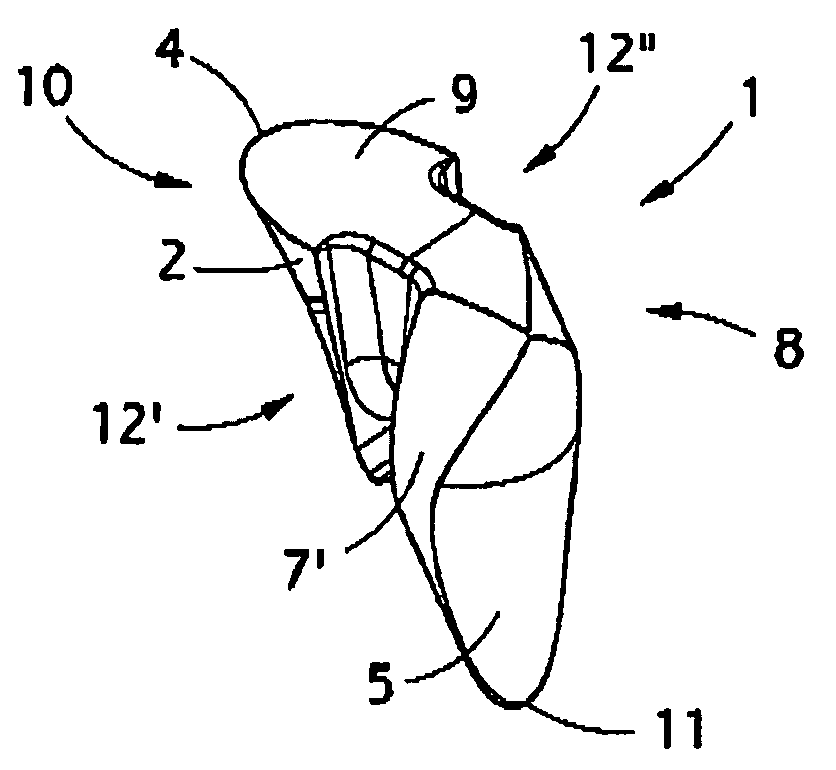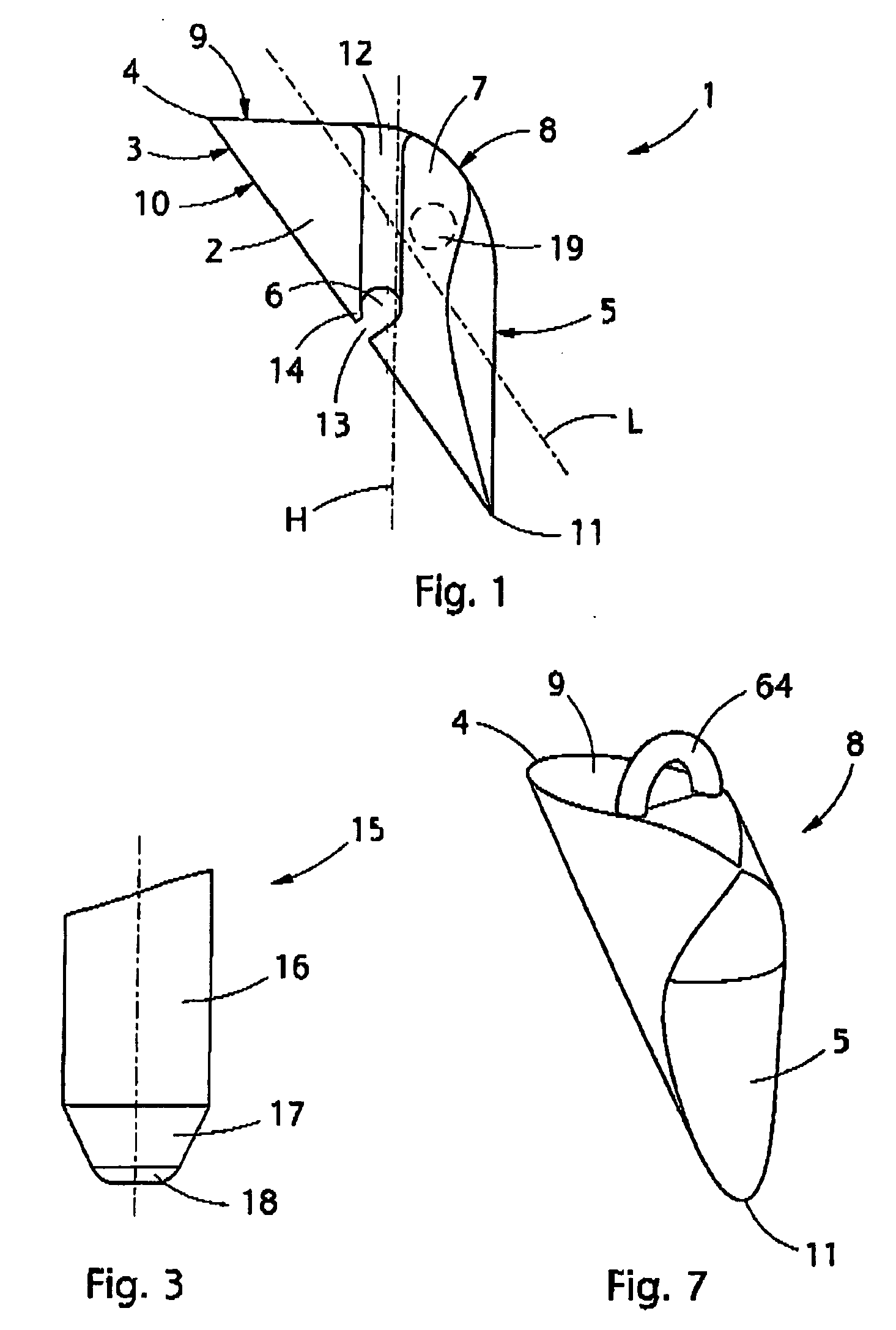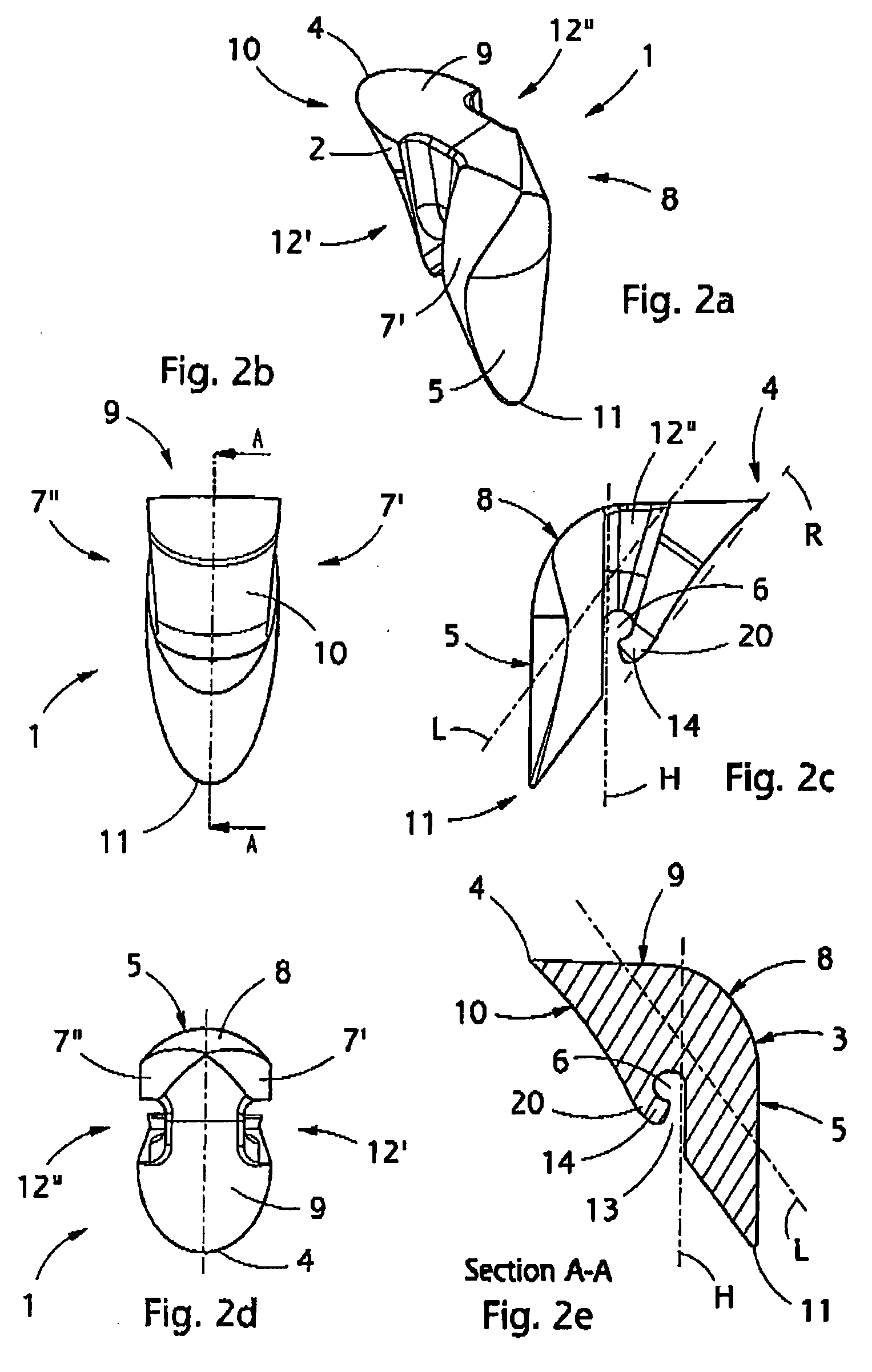Apparatus for attaching sutures
a technology for attaching sutures and sutures, which is applied in the field of suture anchors, can solve the problems of eyelet failure, known suture anchor damage, and the structure of the anchor is vulnerable to breakage, and achieves the effect of increasing the procedural options for the surgeon and being convenient to attach sutures
- Summary
- Abstract
- Description
- Claims
- Application Information
AI Technical Summary
Benefits of technology
Problems solved by technology
Method used
Image
Examples
Embodiment Construction
[0030]FIG. 1 is a schematic side view of a suture anchor according to the present invention.
[0031] The suture anchor comprises an anchor body 2, which is preferably made of a biodegradable polymer material that absorbs into the organ system and is prepared by polymerising or copolymerising for instance lactic acid, L-lactide, D-lactide, D, L-lactide, mesolactide, glycolic acid, glycolide or a cyclic ester copolymerised with lactide, or of any other corresponding material known per se to a person skilled in the art, which will not be discussed in this context in greater detail. Other suitable biodegradable polymers, copolymers and polymer mixtures are listed in the following publications, for instance: [0032]“Encyclopedic handbook of Biomaterials and Bioengineering, Part A,” Donald, L. Wise, Debra J. Trantolo, David E. Altobelli, Michael J. Yaszemski, Joseph D. Gresser, Edith R. Schwartz, 1992, by Marcel Dekker, Inc., pages 977 to 1007, [0033]“Biodegradable fracture-fixation devices...
PUM
 Login to View More
Login to View More Abstract
Description
Claims
Application Information
 Login to View More
Login to View More - R&D
- Intellectual Property
- Life Sciences
- Materials
- Tech Scout
- Unparalleled Data Quality
- Higher Quality Content
- 60% Fewer Hallucinations
Browse by: Latest US Patents, China's latest patents, Technical Efficacy Thesaurus, Application Domain, Technology Topic, Popular Technical Reports.
© 2025 PatSnap. All rights reserved.Legal|Privacy policy|Modern Slavery Act Transparency Statement|Sitemap|About US| Contact US: help@patsnap.com



